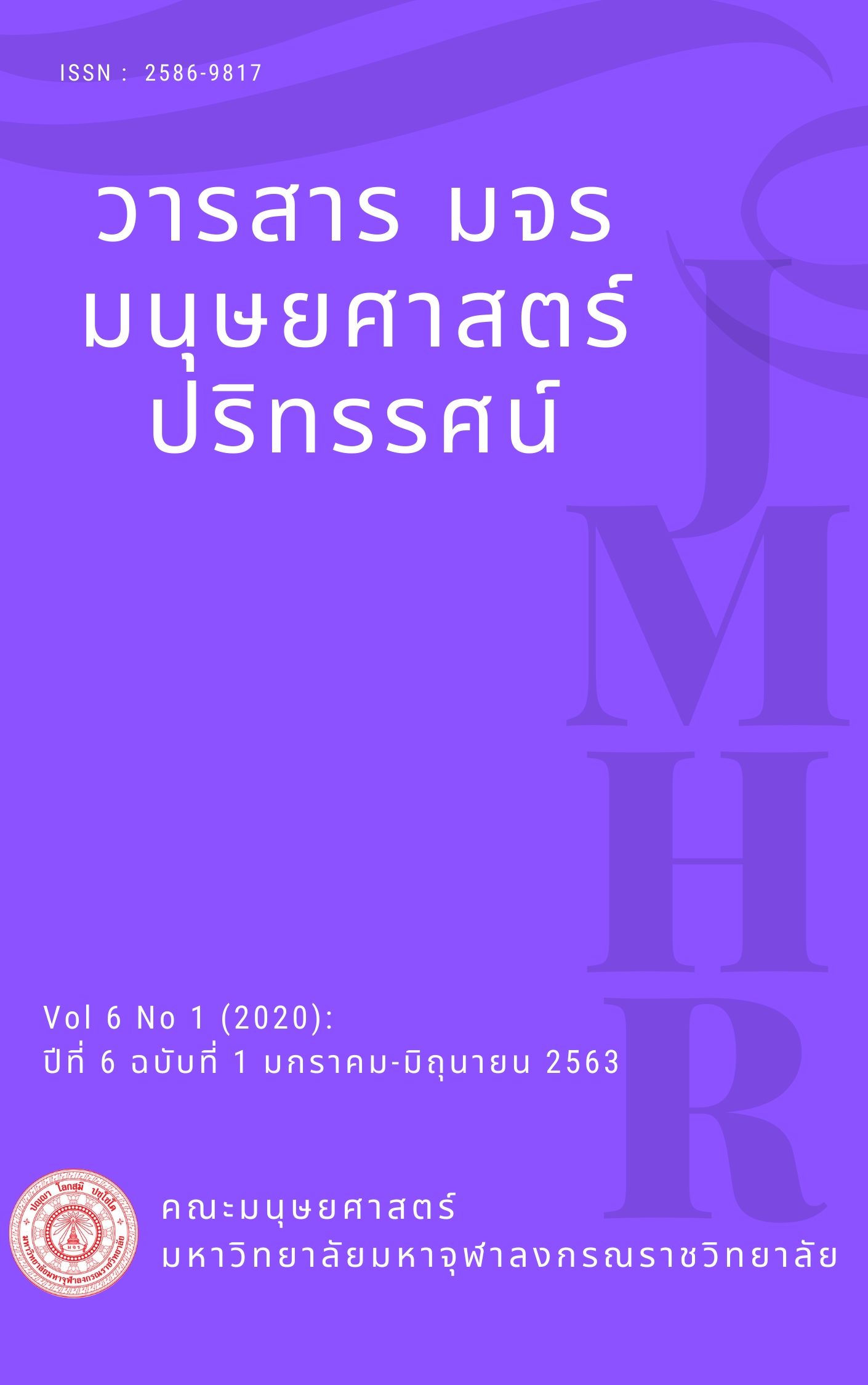The Effects of Corpus-based Approach on Senior Secondary School Students’ Writing Narrative Paragraph Ability
คำสำคัญ:
Narrative Paragraph Writing, Corpus-based Approach, Teaching and Language Corporaบทคัดย่อ
The study aimed to (1) analyze the effectiveness of adopting Corpus-based approach to develop students’ English narrative paragraph writing skills, (2) to investigate the effects of how students use Corpus technology in paragraph writing, and (3) to examine students’ attitudes towards using a corpus-based approach instructional material to enhance students’paragraph writing skills.Thirty-four Mathayomsuksa 5 students were the subjects of the study drawn by purposive sampling and the subjects were divided into different levels of English proficiency. The subjects worked on corpus-based activities in the writing course and were assigned to write narrative paragraphs based on the topics related to their daily activities.The research was quasi-experimental research which included both quantitative and qualitative research instruments. The instruments were 1) pre- and post-writing tests, 2) questionnaire, and 3) instructional plans. The results showed that the mean scores of the post-test ( = 15.94) were significantly higher than the mean score of the pre-test ( = 11.44). The overall vocabulary use fell into A1 level according the CEFR. Finally, the results from opinion questionnaire also revealed that the participants were moderately satisfied with the corpus-based instruction ( = 4.50).
เอกสารอ้างอิง
Babbie, E. and Rubin, A. (1989). Research Methods for Social Work. California: Wadsworth.
Barua, S. (2017). A Study of Problems and Solutions for English Writing Skill of Students of Mahachulalongkornrajavidyalaya University (Doctoral dissertation, Mahachulalongkornrajavidyalaya University).
Bernardini, S. (2004). Corpora in the classroom: An overview and some reflections on future developments. In J. McH. Sinclair (Ed.), How to use corpora in language teaching.
Carter, R., & McCarthy, M. (1999).Vocabulary and language teaching. London: Longman.
Fraenkel, J. R., Wallen, N. E., & Hyun, H. H. (2012). How to Design and Evaluate Research in Education. New York: McGraw- Hill.
Hatch, E & Farhady, H. (1982). Research design and statistic for applied linguistics. Rowley: Newbury House Publisher Inc.
Johns, T. (1991). Should you be persuaded—two samples of data-driven learning materials. In T.Johns & P. King (Eds.), Classroom Concordancing (Vol. 4).
Nesi, H. and Gardner, S. (2012). Genres across the Disciplines: Student Writing in Higher Education. ambridge University Press.
“__________”. (2017). Stance in the BAWE Corpus: New Revelations from Multidimensional Analysis. Corpus Linguistics 2017, University of Birmingham. 25-28 July 2017.
O'Keeffe, A., M. J. McCarthy, and R. A. Carter (2007). From Corpus to Classroom: Cambridge University Press.
Rodsawang, S. S. (2017). Writing Problems of EFL Learners in Higher Education: A Case Study of the Far Eastern University. FEU Academic Review, 11(1), 269-270.
Römer, U. (2011). Corpus research applications in second language teaching. Annual review of applied linguistics, 31, 205-225.
Urbanova, L., & Oakland, A. (2002). Úvod do anglické stylistiky. Brno: Barrister & Principal.
Walsh, K. (2010). The importance of writing skills: Online tools to encourage success. Retrieved December 27, 2012, from http://www.emergingedtech.com/2010/11/the-importance-of-writing-skills-online-tools-to-encourage-success/






